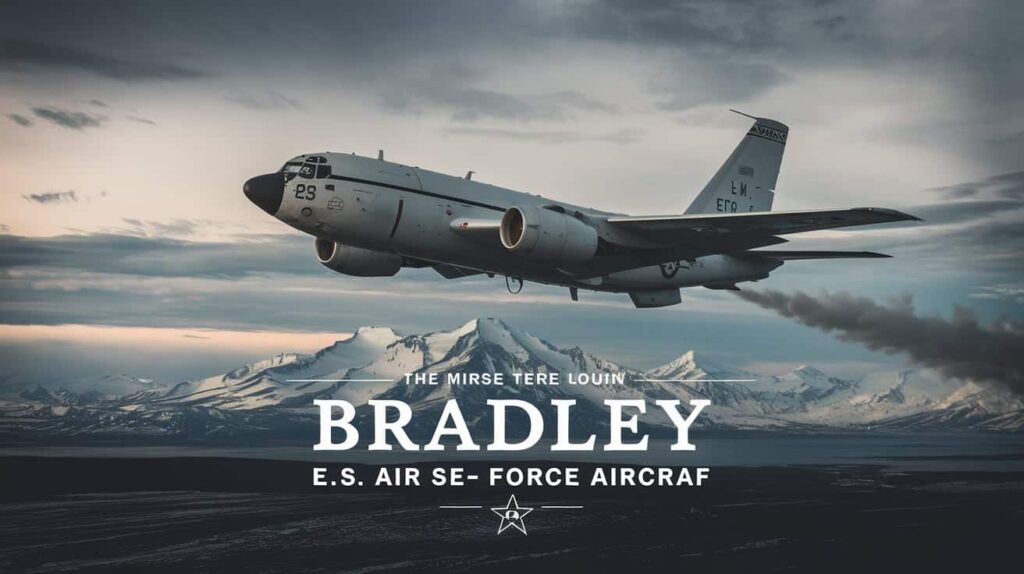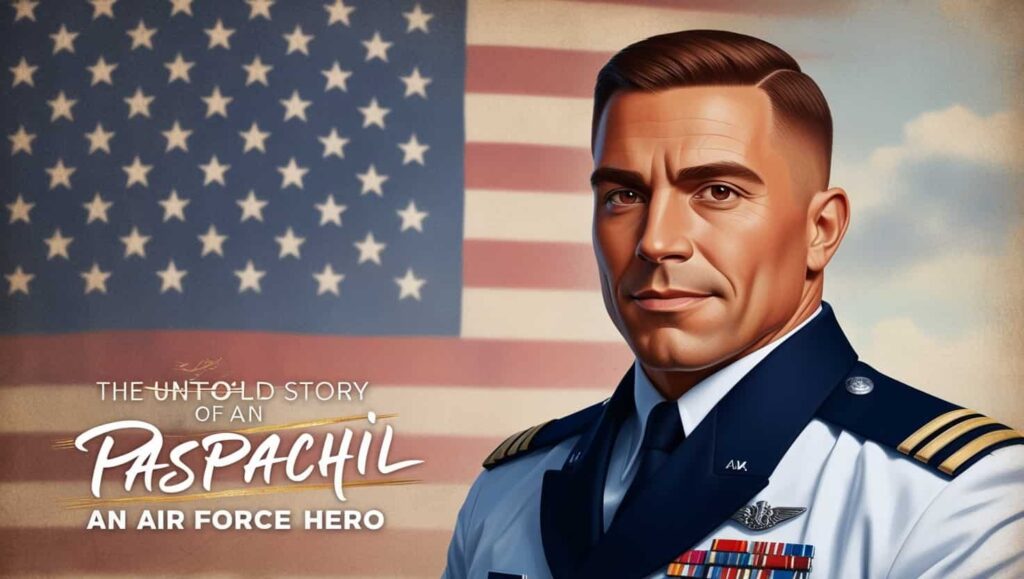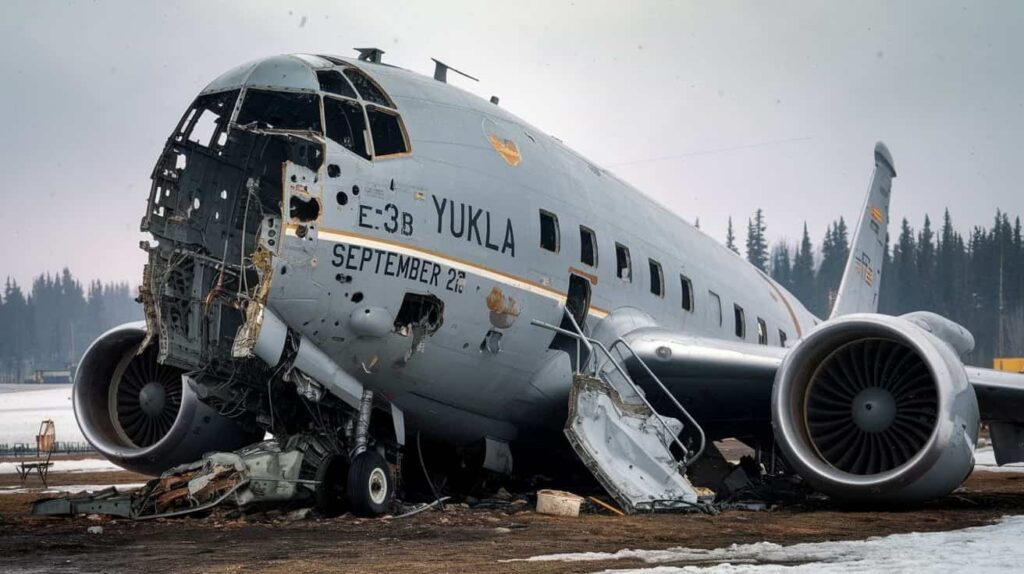While serving in the United States Air Force, I worked alongside many incredible individuals. Today, I’d like to highlight one of these true heroes: Bradley Paspachil. Bradley, who was originally named Brad Paakola, was a dedicated U.S. Air Force pilot known for his exceptional service before his tragic death in the Yukla 27 crash in 1995.
Born on July 1968, in Waukegan, Illinois, he was commissioned as a Second Lieutenant in the Air Force, beginning a career marked by honor and distinction. Stay tuned with us as we share the inspiring story of Bradley Paspachil. We’ll explore his life, service, and the lasting impact he made as a U.S. Air Force hero.
Who Was Bradley Paspachil? – A True Hero Of The U.S. Air Force!
Bradley Paspachil, originally named Brad Paakola, was a dedicated U.S. Air Force pilot who made an incredible impact during his service. Born in Waukegan, Illinois, on July 14, 1968, he joined the Air Force in 1991 and quickly earned a reputation for his skill, leadership, and commitment to his country.
Bradley served in various key roles, including flying the E-3 Sentry, a vital airborne radar platform for the Air Force. His dedication to his mission and his country was unmatched. Tragically, Bradley lost his life in the Yukla 27 crash in 1995, but his legacy continues to inspire those who serve in the military today.
Bradley Paspachil – Biography!!
| Attribute | Details |
| Full Name | Bradley Paspachil (born Brad Paakola) |
| Date of Birth | July 14, 1968 |
| Birthplace | Waukegan, Illinois, USA |
| Date of Death | September 22, 1995 |
| Cause of Death | Bird strike shortly after takeoff (Yukla 27 crash) |
| Burial Location | Mount Olivet Memorial Park, Zion, Illinois |
| Military Rank | Captain |
| Branch of Service | United States Air Force |
| Service Years | 1991 – 1995 |
| Primary Role | Air Force Pilot (E-3 Sentry AWACS) |
| Passion | Aviation, U.S. Air Force service, leadership |
Early Life And Education Of Bradley Paspachil – See How His Journey Began!
Bradley Paspachil grew up in Waukegan, Illinois, where a deep sense of duty and patriotism shaped his early years. Raised in a community that valued hard work, discipline, and dedication, Bradley developed strong personal values that would guide him throughout his life.
His parents instilled in him the importance of serving others, which became the foundation for his decision to join the military. After graduating high school, Bradley knew he wanted to pursue a career in the U.S. Air Force. Motivated to contribute to his country, he set his sights on becoming an officer and pilot.
In 1991, Bradley earned a commission as a Second Lieutenant in the Air Force, marking the beginning of a journey that would take him through rigorous training, diverse assignments, and ultimately, into the skies as a skilled Air Force pilot. This was the first step in a career that would see him make a lasting impact in military aviation.
Bradley Paspachil’s Military Career – Discover His Journey And Legacy As A U.S. Air Force Hero!

Bradley Paspachil officially began his military journey on February 19, 1991, when he joined the U.S. Air Force. He attended Officer Training School (OTS) at Lackland Air Force Base in Texas, where he underwent intensive training to develop leadership skills and military discipline.
By June 1991, he graduated and was commissioned as a Second Lieutenant. Following his commissioning, Bradley was selected for Undergraduate Pilot Training (UPT) at Reese Air Force Base in Texas, a prestigious program known for producing top-notch pilots.
Bradley excelled in the program and earned his pilot wings in June 1992, marking a significant milestone in his career. From this point onward, his passion for aviation and dedication to serving his country only grew stronger, setting the stage for a distinguished career in the Air Force.
Bradley Paspachil’s Journey To Becoming A U.S. Air Force Pilot – Learn About His Path To Serving His Country!
The Beginning Of His Journey:
After earning his commission in 1991, Bradley’s first step towards becoming a pilot was attending Undergraduate Pilot Training (UPT) at Reese Air Force Base, Texas. He joined the 54th Flying Training Squadron, where the rigorous training program would shape him into a skilled pilot. This was the first major hurdle in his journey, and Bradley approached it with determination and focus.

Overcoming The Challenges Of Military Flight Training:
Military flight training was demanding, both physically and mentally. Bradley had to endure intense physical fitness requirements and mentally challenging flight maneuvers and procedures. The training program was designed to test every aspect of a pilot’s capabilities, from precision flying to strategic decision-making under pressure.
Earning His Pilot Wings:
Bradley’s perseverance paid off in June 1992 when he successfully graduated from UPT and earned his pilot wings. This accomplishment marked the culmination of a lot of hard work and sacrifice. Earning his wings confirmed Bradley’s abilities as a pilot and paved the way for his future assignments in the Air Force, where he would make significant contributions to the military.
Why Was Bradley Paspachil’s Move To Alaska Important For His Career?
In January 1994, Bradley Paspachil was transferred to Elmendorf Air Force Base in Alaska, a move that played a key role in his military career. Alaska’s challenging weather conditions and vast operational areas tested his skills and adaptability as a pilot.
The assignment required him to perform under tough conditions, which helped him grow both professionally and personally. Serving in this strategic location allowed Bradley to develop his expertise in airborne surveillance further and strengthen his ability to handle high-pressure situations.
Where Did Bradley Paspachil Serve During His Career?
- Tinker Air Force Base, Oklahoma: Bradley’s first assignment was with the 963rd Airborne Warning and Control Squadron at Tinker AFB. He operated the E-3 Sentry (AWACS) and contributed to air surveillance and battle management missions.
- Elmendorf Air Force Base, Alaska: In January 1994, Bradley was transferred to Elmendorf AFB and joined the 962nd Airborne Air Control Squadron. This assignment exposed him to Alaska’s challenging operational environment, where he continued to fly the E-3 Sentry on critical missions.
- Reese Air Force Base, Texas: Bradley completed his Undergraduate Pilot Training (UPT) at Reese AFB in Texas before his first official assignment, earning his pilot wings in 1992. This training was essential for his future success as a pilot in the Air Force.
What Happened In The Yukla 27 Tragedy, And How Did It Impact Military Aviation?
On September 22, 1995, the E-3B Sentry aircraft, call sign Yukla 27, tragically crashed shortly after taking off from Elmendorf Air Force Base in Alaska. The crash was caused by a bird strike that severely damaged one of the aircraft’s engines, leading to a loss of control. Sadly, Bradley Paspachil and 23 other crew members lost their lives in this devastating accident.

The Yukla 27 tragedy became one of the most heart-wrenching events in military aviation history. It brought attention to the dangers of bird strikes and significantly improved safety measures and bird strike prevention protocols for military and civilian aviation.
What Can We Learn From Bradley Paspachil’s Life And Sacrifice?
Bradley Paspachil’s life teaches us the value of hard work, dedication, and never giving up, no matter how tough things get. His journey from a small town to becoming an Air Force pilot shows that we can achieve great things with persistence. His ultimate sacrifice reminds us of serving a higher purpose and putting others before ourselves.
Bradley’s commitment to excellence and his ability to overcome challenges highlight the power of resilience. His story inspires us to lead with courage, pursue our goals with determination, and never forget the meaning of sacrifice.
FAQs:
What Was the Yukla 27 Incident?
The Yukla 27 crash occurred on September 22, 1995, when a bird strike caused the E-3B Sentry to crash shortly after takeoff. It became one of the most tragic military aviation accidents in history.
Why Was Bradley Paspachil’s Transfer to Alaska Important?
His transfer to Elmendorf AFB in Alaska in 1994 was crucial because it exposed him to the challenges of operating in extreme weather conditions. This assignment helped him develop valuable skills in high-pressure environments.
What Did Bradley Paspachil Do in the U.S. Air Force?
Bradley was a pilot for the E-3 Sentry aircraft, an essential part of airborne surveillance and command operations. During his service, he was instrumental in supporting various military missions.
What Legacy Did Bradley Paspachil Leave Behind?
Bradley’s legacy lives on through his courage and leadership. His sacrifice inspires future generations of service members to pursue excellence and honor the values he stood for.
How Did Bradley Paspachil’s Family and Friends Remember Him?
Bradley’s family and friends remember him as a dedicated and loving individual who put others before himself. Those who knew him best commemorate his service to the Air Force and his ultimate sacrifice, ensuring that his legacy lives on.
Conclusion:
Bradley Paspachil’s life and service to the U.S. Air Force remain a powerful example of dedication, sacrifice, and leadership. Despite facing numerous challenges, he always strived for excellence in everything he did.
His tragic death in the Yukla 27 crash serves as a reminder of the risks military personnel face daily. Bradley’s legacy inspires future generations of airmen to serve with honor and courage. His story is a testament to the true meaning of selflessness and commitment to a greater cause.
Must Read:

